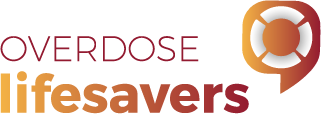Signs of Overdose and How to Respond
Around Australia, and in many other parts of the world, people who consume opioids and their friends and family are responding to overdoses and saving lives. Indeed, acknowledging this life-saving work is part of what Overdose Lifesavers is about. If you think you may encounter an opioid overdose in the future, the information on this page is relevant to you.
Common signs of opioid overdose include
- Difficult, shallow or no breathing
- Gurgling or snoring sounds
- Loss of consciousness
- No response to loud sounds or touching such as nudging, shaking or pinching
- For lighter skinned people, the skin may look bluish
- For darker skinned people, the skin may look grey
- The body is limp
What to do if you witness an overdose and you don’t have naloxone
- Call triple zero (000) immediately: to receive the best advice, make sure you tell the operator you think this is an opioid overdose (informing the operator of an overdose will not cause them to call the police)
- Try to rouse the person
- Follow triple zero (000) operator instructions carefully
- [If trained in cardiopulmonary resuscitation (CPR)]: Check for pulse and conduct CPR.
- Rescue breathing: give two slow breaths then one breath every five seconds
- Recovery position: roll the person on their side and make sure their airway is clear
- Monitor: stay with the person until the ambulance arrives
What to do if you witness an overdose and you do have naloxone
- Call triple zero (000) immediately: to receive the best advice, make sure you tell the operator you think this is an opioid overdose
- Administer naloxone:
- For injectable naloxone (such as ampoules of Prenoxad®): inject the naloxone into the upper arm or thigh muscle at a 90-degree angle
- For nasal naloxone (such as Nyxoid®): spray once into one nostril
- [If trained in cardiopulmonary resuscitation (CPR)] Check for pulse and conduct CPR.
- Rescue breathing: apply two slow breaths then one breath every five seconds
- Recovery position: roll the person on their side and make sure their airway is clear
- Administer second dose of naloxone: if the person hasn’t started breathing properly after two or three minutes, give them another dose of naloxone
- Monitor: stay with the person until the ambulance arrives
Ineffective actions include slapping, hitting or splashing water on the person. Giving them other drugs such as speed or cocaine is also ineffective.


